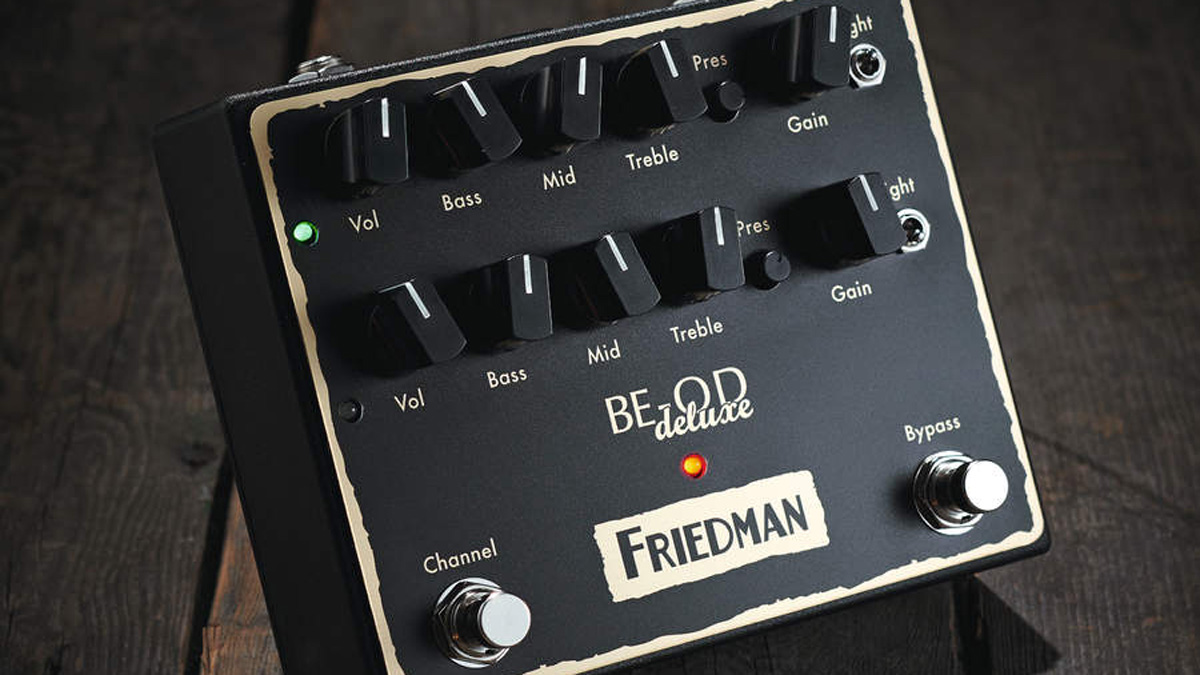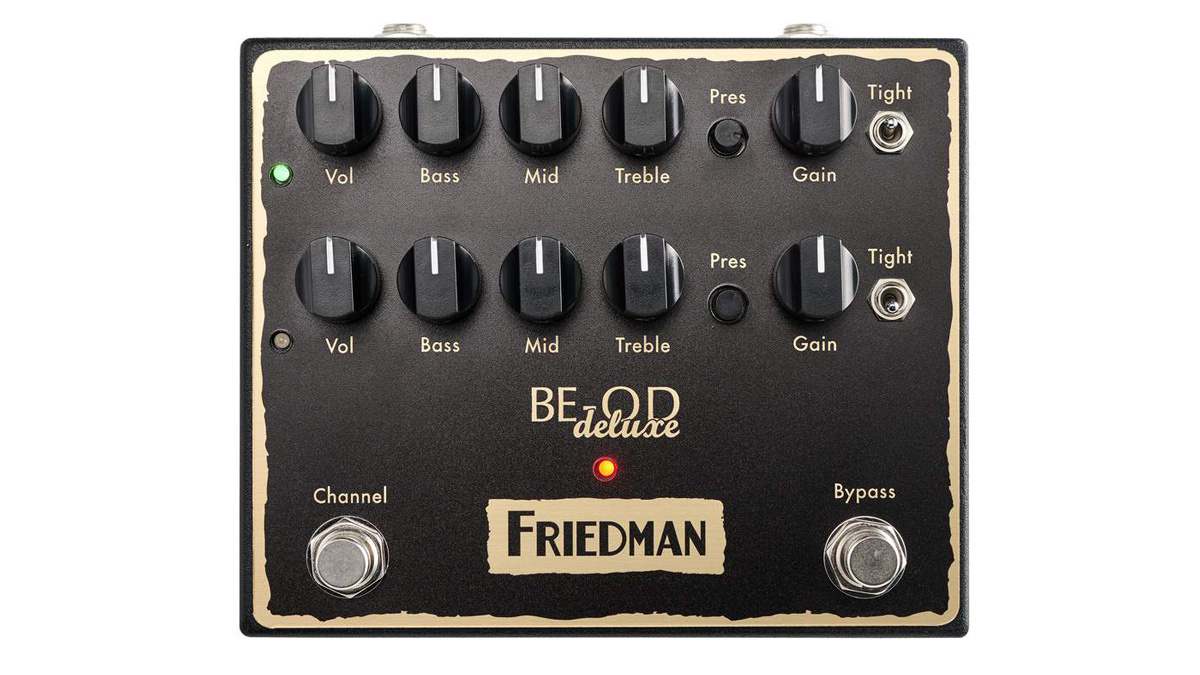MusicRadar Verdict
A roaring beast of a pedal that will add two channels of Brit-style driven amp distortion to any amp.
Pros
- +
Familiar Brit-flavoured sound.
- +
Very high-gain sounds available.
- +
Two channels for different gain amounts.
Cons
- -
Presence knobs are a little fiddly, but you’d probably set ’em and forget ’em anyway.
MusicRadar's got your back
The Marshall amp sound has inspired many boutique manufacturers, one of which is US-based Friedman, which not only produces a range of amp models offering various takes on the ‘M’ theme but also offers up distortion pedals based on those amps.
One of Friedman’s popular models, the 100-watt EL34-powered BE-100, spawned the BE-OD pedal a while ago. Now, Friedman has come up with a Deluxe version that puts two variations of the original pedal in a single housing, effectively creating a twin-channel M-style amp-in-a-box pedal.
Each of the BE-OD Deluxe’s two channels has an identical set of controls. Where the original single pedal had a knob to set the tightness of the sound, effectively rolling off bottom-end for less thump, that’s replaced here by a three-position toggle switch. Overall tonal flexibility has, though, been enhanced by the addition of a Mid knob. Friedman says that Channel 1 is identical to the original pedal, while Channel 2 has been voiced with lower gain suggesting a two-stage dirty and dirtier or rhythm/lead approach.
However, if the default overall amount of gain on each channel doesn’t suit your needs, there are internal trim-pots with both upwards and downwards movement - useful to set your ideal contrast between the two channels.

The authentic amp-like sounds range from gritty M-flavoured raunch through to balls-to-the-wall distortion. Lower gain settings dial in a vintage Plexi flavour, while up the scale you’ll find a more modern master-volume-amps vibe with loads of harmonics.
The Treble and Presence knobs work together in adjusting the pedal’s voice to work with a wide range of amps (as we found getting our small Fender combo and AC30 cooking with hard rock and metal sounds), and the midrange knob is influential in giving you that little extra so that the guitar doesn’t disappear in a band mix.
As for the Tight control, there’s a lot of bottom-end in the pedal if you want it, but the two positions do really tighten things up, losing any flubbiness and keeping it solid, especially useful if you’re using dropped tunings.
Trevor Curwen has played guitar for several decades – he's also mimed it on the UK's Top of the Pops. Much of his working life, though, has been spent behind the mixing desk, during which time he has built up a solid collection of the guitars, amps and pedals needed to cover just about any studio session. He writes pedal reviews for Guitarist and has contributed to Total Guitar, MusicRadar and Future Music among others.
“I’m beyond excited to introduce the next evolution of the MT15”: PRS announces refresh of tube amp lineup with the all-new Archon Classic and a high-gain power-up for the Mark Tremonti lunchbox head
"You can repurchase if it works for your schedule": Fyre 2, Billy McFarland’s ‘luxury’ festival is postponed indefinitely
“I actually specifically remember making a deal with myself": Billie Eilish reveals what she had to do in order to become “looser and jazzier” with her vocal delivery











